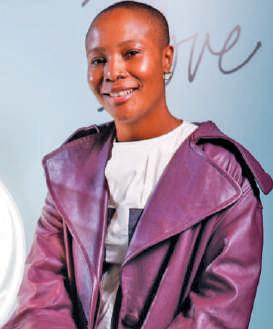
4 minute read
Ex Reggae Boyz skipper seeks new club
News UK media still fails to represent BAME communities, study says
Journalism remains dominated by white men – despite the growing need for black voices to be heard
THE PAST AND THE PRESENT:
Fewer opportunities are available to men and women of colour in the world of journalism – but this is nothing new, as depicted in this image of the Evening Standard offices in 1975 (photo: Evening Standard/Getty)
By Ilayda McIntosh
ARECENT STUDY, entitled A Week In British News, has found that the UK media fails to equally represent BAME communities.
The research conducted by charity organisation Women in Journalism examined national newspapers and prime time TV and radio across a single week (July 13-19, 2020).
The study was conducted by 12 journalism students from City University of London and University of Westminster and was funded by Tesco.
Eleanor Mills, former editorial director of The Sunday Times and chair of Women in Journalism, coordinated the study. In an interview on BBC 4’s The Media Show, Mills said: “There’s been a lot of talk in the wake of Black Lives Matter about how media organisations need to be more representative.
“It’s known that the media is not wonderfully diverse – but we wanted to see if things have got any better. We’ve studied about 100 hours of prime time news shows on TV and radio and the national newspaper front pages for a week ... the results are shocking.”
Across the single week, not a single black reporter was featured on the front page of a national newspaper. Additionally, out of the 174 bylines studied, only one in four went to women, and not a single black woman had a story on the front take.

QUOTED
A Week In British News also examined those quoted on the front pages.
Out of 111 people quoted, only three BAME women were quoted, one being Priti Patel. Of the three, only one was a black woman – Jen Reed who was quoted in The Guardian after a statue of her was erected in the place of slave trader Edward Colston.
The findings from TV were mildly better than that of the newspapers.
T h i r t y per cent of prime time news pres e n t e r s are from B A M E back- grounds. However, out of the 723 prime time reporters observed, 13 per cent were from BAME backgrounds, with only four being black. Mills noted that the demographic of younger generations are gradually becoming more diverse, therefore it’s “not surprising that the media is losing younger viewers and readers when they are so under-represented”.
“If all the stories you read are refracted through the view of a whole load of old white posh blokes on the backbench then you end up with a very weird view of the world,” she said. Founder of digital publication gal-dem , Liv Little, pictured left, also commented on the f i n d i n g s on BBC 4’s The Media Show: “It’s p a i n f u l l y depressing to hear these numbers because these are things that we already know because we experience and live through these things every single day.
“It’s shocking, sad, frustrating and bittersweet that it takes
what has happened in recent months to actually spur on these conversations and research.
“Ultimately, we know that media at large is painfully under-representative.”
Little attributed the racial disparity in media, with lack of opportunity for people of colour within the industry.
She added: “There are opportunities [for BAME candidates] to get in at entry level but there isn’t a huge amount of progression.
“It tends to be people of colour who are on temp or freelance contracts. This is exactly the reason that gal-dem exists. There is a range of perspectives for young women and nonbinary people of colour to tell their stories.”
However, the findings of A Week In Journalism have been apparent for many years. A 2016 study, conducted by City University London, found that British journalism is 94 per cent white, 86 per cent university-educated and 55 per cent male. City’s research found that female journalists remain underpaid and under-promoted and only 0.2 per cent of journalists are black.
Class also greatly affects access to opportunities within media.
MOBILITY
The Sutton Trust, an educational charity which aims to improve social mobility and educational disadvantages, found that 51 per cent of the country’s leading journalists were educated privately, and 80 per cent of its top editors went to either private or grammar schools.
Therefore, it’s not surprising that the media fails to accurately and fairly represent BAME communities, the working class, women and LGBTQIA+ communities when those producing the content can hardly relate to or understand the lived experiences of them.
Whether it be sub-consciously, or consciously – there’s no denying a bias would be present and subsequently alter the way stories are told and reported upon. If anything, the above research demonstrates the imminent necessity for equal representation in British media, the consequences can be drastic.
Founder of the cultivation theory George Gerbner coined the term, “symbolic annihilation”, which is “the idea that if you don’t see people like yourself in the media you consume, you must somehow be unimportant”.
This is why representation is more than just a diversity quota – it can be incredibly damaging toward the self-perception within these communities.
Publications and platforms such as The Voice, gal-dem, No Signal, Muslim Sisterhood, Between Borders, Plantain Papers, MESA Magazine, AZEEMA, The Floor magazine, ROOTS Journal and so many more demonstrate how powerful and empowering true representation can be for a community of colour.
When you aren’t offered a seat at the table, you build your own.
The report in full can be found here: https://womeninjournalism.co.uk/lack-diversity-britishnewsrooms





